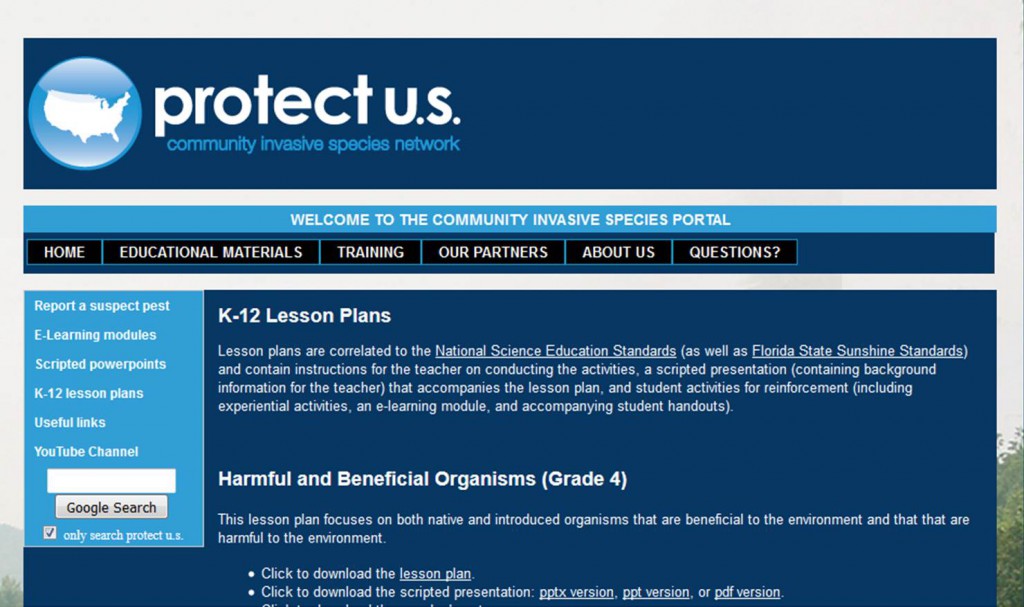Invasive Species-How are They Spread? Although we (humans) are a pathway for possible this introduction. Here’s a recent popular press scientific article that emphasizes the role of humans in the movement and establishment of invasive, non-native species- http://www.msnbc.msn.com/id/48557311/ns/technology_and_science-science/#.UDLcK6llTkc
Of course, we know that several invasive species have arrived on their own accord and not only by human introductions. However, it is important to remember that we can accidentally serve as a means of introducing invasive species to a new habitat. Thanks to Dr. Howard Frank for submitting this article to UF-IFAS Pest Alert!
Interested in including Invasive Species educational materials in your K-12 classroom?
Assistant-In, Extension Scientist and Protect U.S. Coordinator Stephanie Stocks sstocks@ufl.edu has coordinated and authored a series of scripted presentations, lesson plans, a coloring book, and other activities. All educational materials are free to use for educational purposes and correlated to both the National Science Standards and the Florida Sunshine State Standards. Go to http://www.protectingusnow.org/ and click on the K-12 tab. All educational materials are reviewed prior to posting and include detailed references.
Topics include the following-
Harmful and Beneficial Organisms (Grade 4)
Invasive Species and Population Growth (Grade 7)
Biodiversity, Invasive Species, and Plant Biosecurity (Grades 9-12)
Protect U.S. is primarily a partnership between the National Plant Diagnostic Network (NPDN); the Regional IPM Centers; USDA, Animal and Plant Health Inspection Services, Plant Protection and Quarantine (USDA-APHIS-PPQ); and USDA, National Institute of Food and Agriculture (USDA-NIFA). The University of Florida/IFAS Extension is the Regional Center for the Southern Plant Diagnostic Network (SPDN). NPDN/SPDN supports your local state-based plant diagnostic clinics and the early detection of exotic pests.
 0
0

